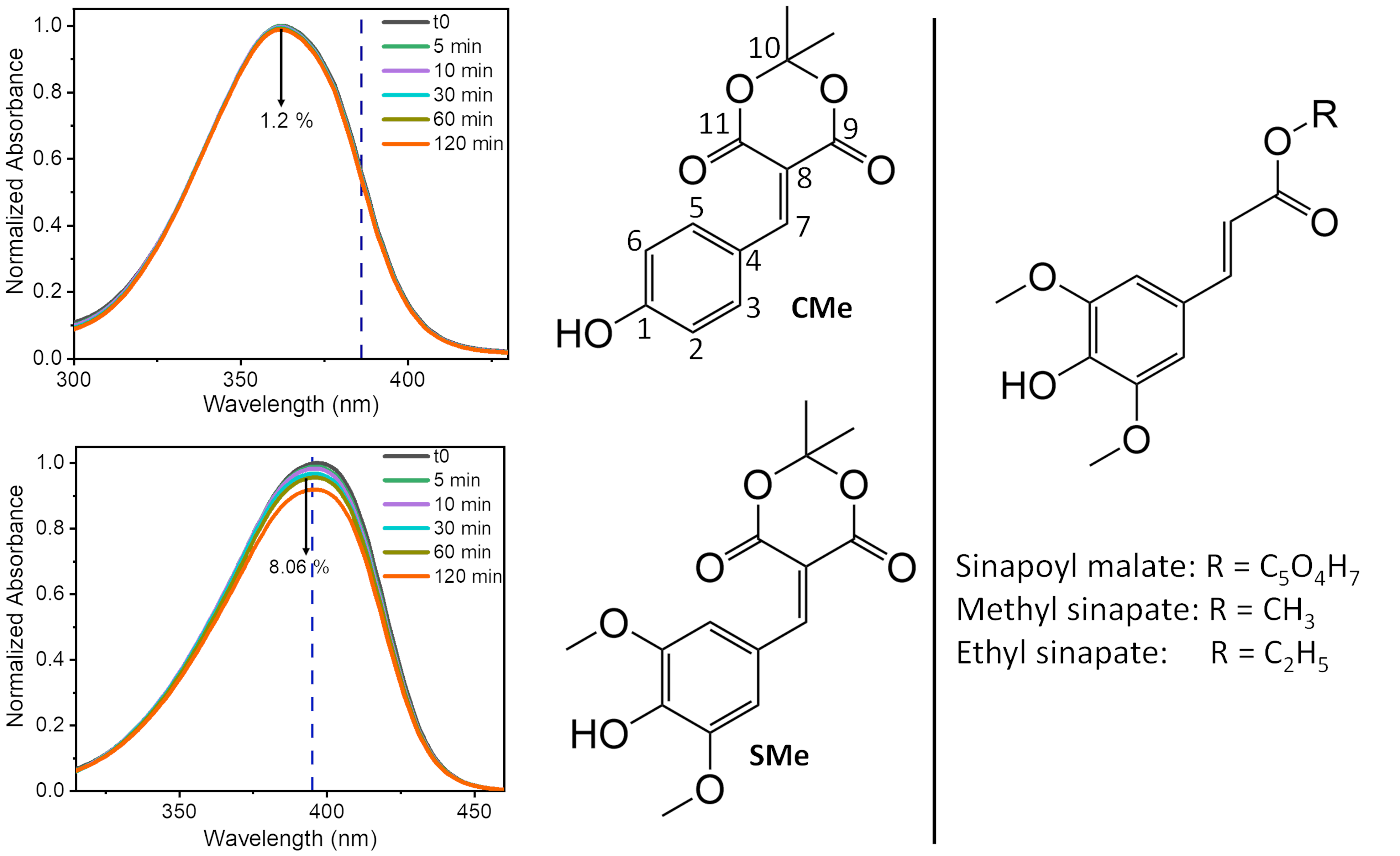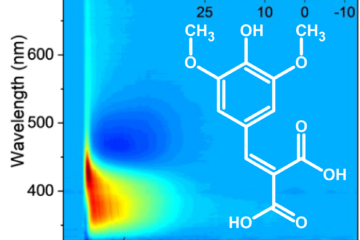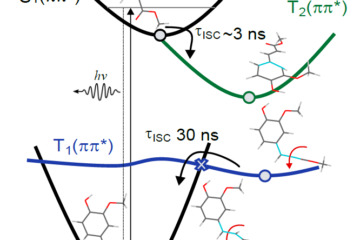Meldrum phenolics proposed as a new class of UV-A filters.
In brief:
- Experimental analysis of coumaryl and sinapyl Meldrum shows that both surpass the basic requirements of an industry-standard UV-A filter.
- The photophysics of these systems occurs through an ultrafast twisted intramolecular charge-transfer mechanism guiding internal conversion to the ground state.
The sparsity of efficient commercial UV-A filters is a major challenge toward developing effective broadband sunscreens with minimal human- and eco-toxicity. To face this challenge, we have designed a new class of Meldrum-based phenolic UV-A filters.
In a multi-institutional collaboration led by Vas Stavros, from Warwick, we explored the ultrafast photodynamics of coumaryl Meldrum (CMe) and sinapyl Meldrum (SMe), both in an industry-standard emollient and on a synthetic skin mimic, using femtosecond transient electronic and vibrational absorption spectroscopies and computational simulations.
Our team in Marseille was responsible for the simulations and counted on the contributions of Josene Toldo (who was the project leader of the computational part), Mariana Casal, and myself.
The reason for the photostability of CMe and SMe is connected to their ultrafast photophysics. Upon photoexcitation to the lowest excited singlet state (S1), these Meldrum-based phenolics undergo fast and efficient nonradiative decay to repopulate the electronic ground state (S0).
We showed that both systems evolve out of the Franck−Condon region toward an S1/S0 conical intersection through an ultrafast twisted intramolecular charge-transfer mechanism within 200 to 300 fs. The internal conversion to S0 takes place within 0.5 ps for CMe and 1.2 ps for SMe. The subsequent vibrational cooling occurs within 10 ps.
The slight difference in the internal conversion lifetimes of the two species is due to a locally-excited (LE) minimum in the SMe’s reaction path, not present in CMe.
Finally, we correlated these findings to these chromophores’ long-term photostability upon irradiation with a solar simulator and conclude that both surpass the basic requirements of an industry-standard UV filter.
This work was done in the framework of the Fet Open BoostCrop project (Grant Agreement 828753).
MB
Reference
[1] T. T. Abiola, N. d. N. Rodrigues, H. Casey, D. J. L. Coxon, M. D. Horbury, J. M. Toldo, M. T. d. Casal, B. Rioux, C. Peyrot, M. M. Mention, P. Balaguer, M. Barbatti, F. Allais, and V. G. Stavros, New Generation UV-A Filters: Understanding their Photodynamics on a Human Skin Mimic, J. Phys. Chem. Lett. 12, 337 (2020). DOI:10.1021/acs.jpclett.0c03004



